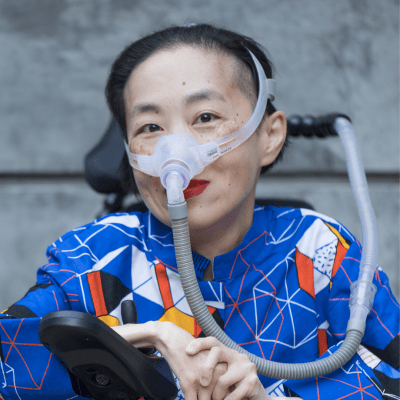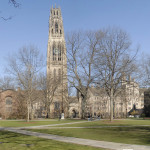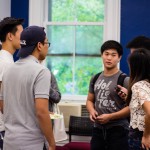
On Thursday, March 4th, 2021, the Asian American Cultural Center (AACC) at Yale launched Pan Asian American Heritage Month (PAAHM) with keynote speaker, Alice Wong, a disabled activist, consultant, and media maker. She is the founder of Disability Visibility Project (DVP), an online platform dedicated to creating and engaging with disability media and culture by collecting oral histories, publishing original written pieces, and facilitating events.
For this year’s celebration of PAAHM, the AACC focuses on thinking critically about what solidarity looks like in the Asian and Asian American community. The event was moderated by junior Arya Singh and had two ASL interpreters, Travis Nguyen and Sarika Mehta.
As the director of DVP, Wong shared her inspiration for disability media and culture. DVP encourages people with disabilities to share their valuable stories and experiences. During the 25th anniversary of the Americans with Disabilities Act (ADA) in 2014, Wong considered the absence of disability in high school and college curriculums – even when available, students have to seek it out. She asked herself, why do we have to wait for historians or academics to notice us?
Wong took direct action, beginning with an oral history project. She employed a variety of formats to share these stories, soon realizing, “there are so many of us from different communities” who could engage in advocacy.
Many people tend to avoid getting into advocacy work because they have a misconception that they have to follow certain words and rules. But that idea is just one way to be an advocate, Wong says, and there is so much room to change it. Wong believes that storytelling is political; information diffusion – whether it be interpersonal or institutional, or through social media – serves an educational purpose. After all, advocacy should be a joy.
A particular project within her Disability Visibility Project is ADA30, a series of essays written by disabled Black, Indigenous and people of color (BIPOC) that discuss the history of disability rights and justice. As disability rights were created by disabled people of color, Wong’s project grapples with questions about how we move together in solidarity, and specifically about how to create a world that is not centered on achieving rights. Moving away from a rights-based framework – which centers the state – Wong encourages folks to learn about disability justice because it is inherently anti-capitalist and centers on the principles of interdependence and wholeness. We achieve liberation when we do not leave anyone behind.
But the writers of ADA30 did not come into fruition without facing challenges. For example, ADA30 was not accepted at first because it was written from the perspectives of BIPOC folks; the writers felt that they could not bring their full selves as both disabled people and as Black and Indigenous people. Their experiences speak to larger problems with disability.
A key problem that Wong identifies in today’s world of activism is the misuse of the term intersectionality. Nowadays, people use it as a buzzword. They think about intersectionality in terms of diversity and inclusion. They have not been citing and naming the Black feminists, like Kimberle Crenshaw, who theorized intersectionality, wherein racism, ableism, and sexism cannot be separately analyzed and are not separately experienced.
Moreover, disability has been downplayed. During the uprisings of Black Lives Matter, for example, many people did not recognize that a large percentage of Black and Latinx people who have been brutalized are also people with disabilities. Mental health is also largely stigmatized, and voting polls during the election were oftentimes not wheel-chair accessible.
The COVID-19 pandemic has been particularly detrimental to POC disabled communities – ableism has been more explicit than ever. Approximately 40 percent of deaths from the pandemic were from long-term facilities. Older and disabled people were not protected. These deaths were especially overlooked by politicians who said things like, “it was your grandma’s time,” or “if you’re young and healthy you are fine.”
Wong uses a ventilator – she, alongside people with chronic illnesses are especially at high risk for COVID-19. With age-based priorities, vaccine distributions have also been ableist, as they prioritize efficiency and speed over the lives of disabled people. Wong posed the astute question, “How long do you have to wait until you get the vaccine if you’re a 20-year-old with chronic illness?” Many people of whom contracting COVID-19 would be life-threatening or would worsen their condition, like herself, have not left the house since the pandemic began. People do not realize the costs of COVID-19.
Moving forward, moderator Arya asked, how do we make racial advocacy more inclusive of people with disabilities? First, Wong emphasized that we pay attention to ableist language, such as replacing “disability” with “special needs.” Progressives, alike, use ableist terms like “crazy” – the use of these terms must stop. Anyone who wants to work towards liberation must take these considerations seriously, and pay attention to all the people who still don’t feel total enough.
Wong encourages us to study about disability and to show solidarity. “We need more choices,” she says. “Access is different for everyone – and we have to be mindful of that everyday.”
You can view the recorded online event here.
Jennifer Qu ’22

